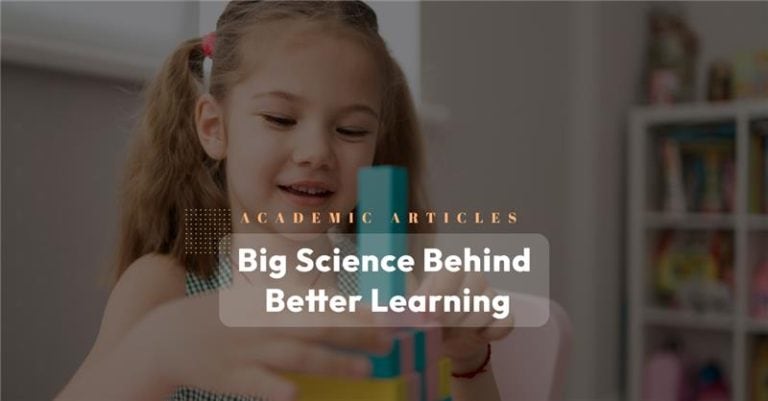Online learning is a rapidly growing part of modern education. The pandemic only accelerated its push into mainstream education, but three years since the restrictions ended, nothing indicates a slowdown. The forced relocation of millions of kids and adolescents from real to virtual classes was doubtlessly traumatizing, and the effects are still under the microscope.
This is where science comes in. The science of learning is a complex, multidisciplinary effort to understand how we absorb, digest, and store information. It is vital to traditional and online education and also important for parents who are deciding whether to enroll their kids in one or another.
Difficult names for important things
Some discussions revolve around generally self-explanatory terminology, such as socialization, flexibility, learning environment, habits, etc. Some terms, however, are alien to the general population, including most parents. Yet the phenomena they relate to are often at the core of what is observable in classrooms and among online students.
Let’s take a quick look at some topics underlying the science of learning.
For decades, even centuries, scientists have been trying to understand how the brain learns and retains information. In the research of educational options, terms like the Ebbinghaus curve, neuroplasticity, cognitive growth, dual coding theory, executive functions and others show up.
Those concepts seek to explain why we forget and how we can remember better. Understanding the learning mechanisms helps educators develop strategies to improve knowledge intake and retention and boost problem-solving skills. Implementing what scientists from various fields recommend can make learning more efficient, engaging, and even fun, and the knowledge long-lasting.
Here are some of the terms related to the science of learning – some overlap, which is inevitable as the territory of the human mind is vast, complex, diverse, and still largely unexplored.
Ebbinghaus Curve (Forgetting Curve)

The Ebbinghaus Curve shows how review boosts memory and fights forgetting.
The Ebbinghaus (or forgetting) curve shows how quickly we forget new information unless we review it. Based on research by Hermann Ebbinghaus in the XIX century, the curve indicates that we tend to rapidly forget chunks of what we’ve just learned – even more than half of it within an hour. However, with spaced repetition, in which we revisit the material at increasing intervals, we can reduce the angle of the Ebbinghaus curve and retain information longer. Online schools integrate this critical aspect of learning into their learning platforms, scheduling reminders and tasks and periodically taking the students back to revisit what they learned to reinforce memory.
Neuroplasticity
Neuroplasticity is the brain’s ability to change and adapt due to experience, including learning. Unlike what scientists thought much earlier, our brains don’t stop developing and adapting after childhood. But that change is the fastest and most prominent in childhood and adolescence – so, in school-age kids.
When we learn something new, practice a skill, or even recover from injury, our brain forms new connections between neurons. With enough effort and the right practice, we can improve almost anything. In online learning, the effort and practice may be stimulated by the layout of the learning platform and its multimedia, multimodal material.
Science shows that the learning experience involving videos, educational games, discussions, and exercises foments the development of neural connections. Encouraging neuroplasticity in learning helps the development of thinking, memory, and attention skills at any age, especially in children.
Cognitive Growth
Cognitive growth refers to the development of mental skills: thinking, understanding, problem-solving, and remembering. It happens as we gain new knowledge and experiences. It’s tied to brain development in children, but even adults continue to grow cognitively when properly challenged. Modern online learning uses well-designed courses not just to deliver facts but help students develop critical thinking, make connections, and solve real-world problems. When students engage deeply, rather than just cramming, they grow intellectually and become more confident in learning.
Dual Coding Theory

The mind remembers best when it sees and hears the story.
Dual coding theory, simply put, suggests that we learn better when we combine words with visuals. For instance, a description of the water cycle may be good, but reading it alongside a video or even a diagram makes it more memorable. That’s because our brains have two systems for processing information – one for verbal and one for visual content. When both systems are activated, we create stronger, more lasting memories.
Online learning strongly leans on dual coding. Videos, illustrations, infographics, and charts can make abstract or complex ideas easier to grasp, helping prevent cognitive overload because learners don’t have to rely on just one type of input. It’s a powerful tool for designing more engaging and effective learning experiences.
Executive Functions
Executive functions are the mental skills we activate to manage thoughts, actions, and emotions. They include working memory, self-control, flexible thinking, and planning. These are the “manager” functions of the brain. They help us set goals, stay focused, resist distractions, and keep track of what we’re doing.
In online learning, where students often have more freedom and fewer external structures channeling them, strong executive functions are key. For example, time management is essential without strictly enforced deadlines. Students also need to switch between tasks and primarily monitor their progress on their own. A student with underdeveloped executive functions may procrastinate, get distracted, or feel overwhelmed. These skills can, however, improve with practice, and online tools, like planners, reminders, and focus apps, can support them.
Share, Discuss, or Ask
Do you have a child in an online school, or are you considering enrolling your child in one? We’d love to hear about your experiences. Let us know what has been or may be decisive in the dilemma of traditional vs. online.
If you have questions, please visit us at EduWW or email [email protected].



